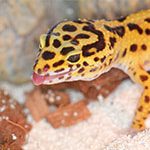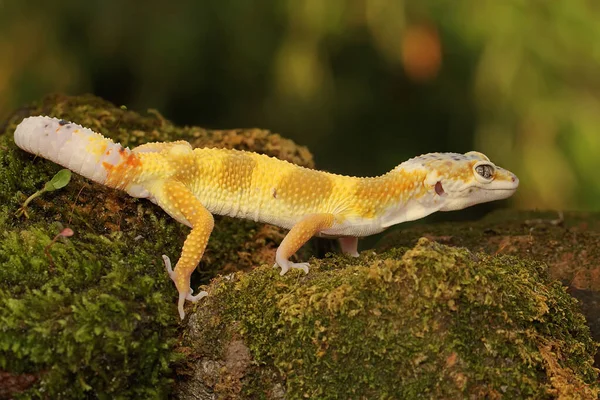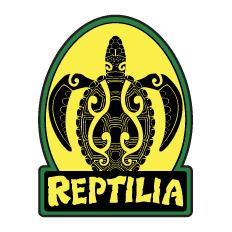
Leopard Gecko
Common Name: Leopard Gecko
Scientific Name: Eublepharis macularius
Type: Reptile
Diet: Insectivore
Average Life Span: 15 – 20 years
Size: 8 – 11 inches
Weight: 60 – 80 grams

About Leopard Geckos
The common leopard gecko (Eublepharis macularius) is a crepuscular, ground-dwelling lizard naturally found in the highlands of Asia and throughout Afghanistan, to parts of northern India. Unlike most geckos, all species in the genus possess movable eyelids, and cannot climb up smooth surfaces, considering they do not have toe pads like most geckos. It has become a well-established pet in many places.
Size and Behaviour
Common leopard geckos are larger than many other gecko species. Hatchlings are on average 7 to 10 cm (2.8 to 3.9 in) in length and weigh about 2 to 5 grams. Adult females are about 18 to 20 cm (7.1 to 7.9 in) in length and weigh about 50 to 70 grams, while adult male geckos are about 20 to 28 cm (7.9 to 11.0 in) in length and weigh about 60 to 80 grams.
Common leopard geckos are ectothermic. They absorb warmth and energy during the day as they are sleeping, so they can hunt and digest food at night. In addition, they have short legs, which enable them to be quick and agile while their small nails allow them to climb twigs and rocks. Common leopard geckos have openings on either side of their head as ears. A tympanic membrane covers and protects it. They use their ears to locate their prey. Healthy common leopard geckos have thick, fleshy tails; a thin tail is an indication that the gecko may be lacking good health. Although, when in captivity, the tail can be fattened by the feeding of waxworms (wax moth larvae), they are not recommended as a staple diet. They can also be fed “pinkies”, a one-day-old mouse to fatten up the tail. Breeders recommend coating crickets in a nutritional powder before serving them either live or dead. Common leopard geckos’ thick tails can regenerate when lost; however, the regenerated tails appear stumpy and never have the same appearance as the original tail.
Diet & Nutrition
Common leopard geckos typically feed on crickets, dubia roaches, mealworms/superworms, and other insects. In captivity, most leopard geckos will prefer hunting food themselves. They need to be kept in hotter tanks heated by UTH (Under Tank Heater) attached to a regulating thermostat.The majority of captive common leopard geckos refuse to eat dead prey. They should not be offered dead prey either, as when dried the nutritional value significantly decreases. Crickets are the most common food source to give them in captivity, as they can hunt them in their enclosure the way they would in their natural environment, though mealworms, waxworms, and dubia roaches (and, less frequently, other roach species) are also common.










